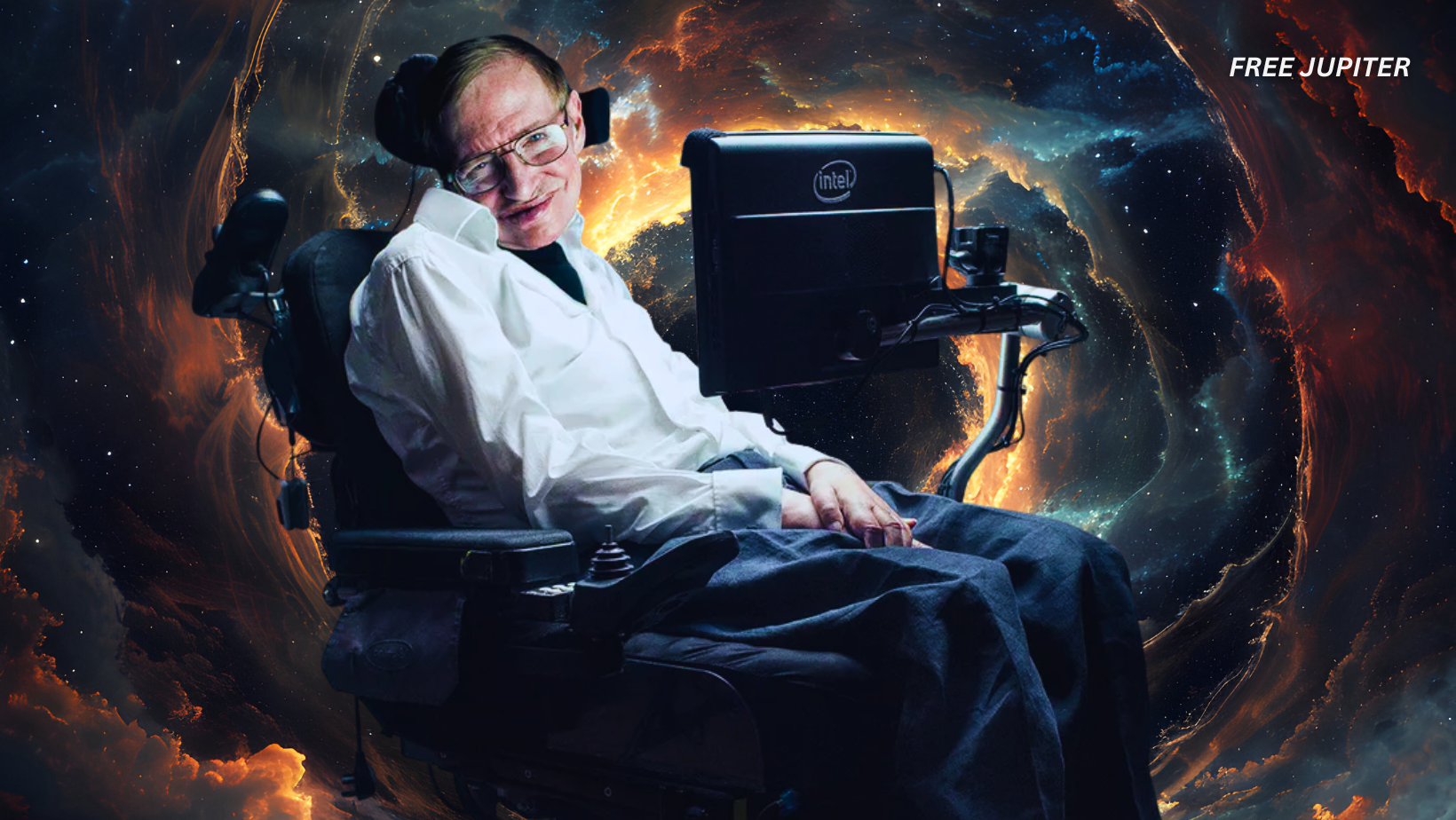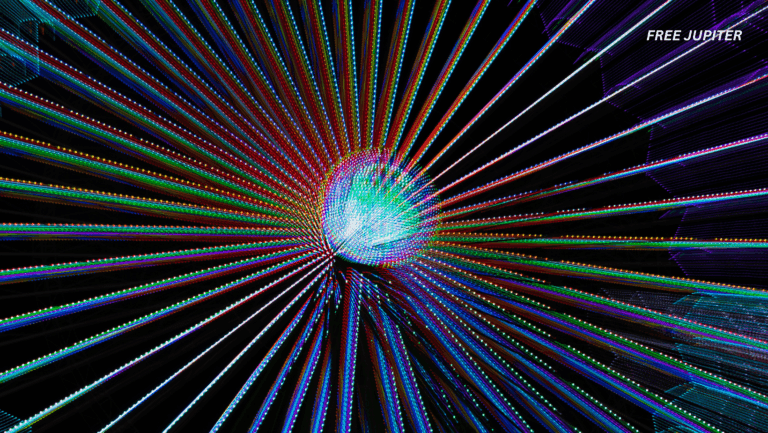Friendly Note: FreeJupiter.com shares general info for curious minds 🌟 Please fact-check all claims—and always check health matters with a professional 💙
In the final weeks of his life, Stephen Hawking did something few people could even imagine doing from a hospital bed: he tried to rewrite the way we understand reality. With his co-author and longtime collaborator Thomas Hertog, Hawking completed what would become his final scientific paper. Titled A Smooth Exit from Eternal Inflation, it dives into topics like the multiverse (yes, multiple universes!) and how our own universe might one day slowly fade into darkness.
It’s heavy stuff—but stay with us. It’s also fascinating, and Hawking, as always, had a way of turning some of the most complex ideas into something humans can (almost) grasp.
From a Hospital Bed to the Edge of the Cosmos
Hawking wasn’t just tying up old ideas in this paper. According to Hertog, the theory they developed was something they worked on intensely, right up until the very end. It wasn’t a footnote—it was a potential capstone to a lifelong search for answers about where we came from, what’s beyond our universe, and where it’s all headed.
And this wasn’t just theoretical musings written on the back of a napkin. Hawking and Hertog were aiming to push cosmology in a whole new direction. They weren’t content with a theory you just believe—they wanted a theory you could test. Something that could one day be measured and proven. That’s a big deal in the world of physics.
The “No Boundary” Idea—A Universe Without Edges
Let’s rewind for a second. One of Hawking’s earlier ideas, developed with physicist James Hartle, is called the no boundary proposal. Think of it like this: if you imagine the universe as a globe, there’s no edge or wall you fall off. It has no clear beginning or end—just smooth curves that transition naturally into what came before and after.
This concept plays a big role in his final paper. The idea is that, instead of just one universe being born in the Big Bang, there may have been many. Like a cosmic lottery, the energy from the Big Bang could have produced countless “bubble universes” floating around in a bigger multiverse. Each one could have its own rules, physics, and maybe even forms of life.
So, yes: the Marvel movies didn’t make up the multiverse idea. Physicists like Hawking were already playing with it long before Doctor Strange got involved.
Stephen Hawking’s Stark Warning for Humans to Leave Earth
Read more: James Webb Confirms There’s Something Seriously Wrong With Our Understanding Of The Universe
Finding the Unfindable: Could We Detect Other Universes?
For decades, scientists have treated the idea of a multiverse as purely theoretical—fascinating to talk about, but impossible to prove. After all, how do you see something that’s potentially beyond the limits of space and time?
That’s where Hawking’s final paper stirred things up.
He and Hertog believed it might be possible to detect evidence of other universes using something like a space probe. The key lies in something called cosmic background radiation—the faint afterglow of the Big Bang. If we could find irregularities or “fingerprints” in that radiation, it might hint at the influence of other universes bumping up against ours, or emerging from the same origins.
It’s kind of like listening to static on a radio and realizing some of the noise might be voices from the next room.
Of course, this is where things get extremely futuristic. We’d need extremely advanced technology—perhaps a spaceship armed with ultra-sensitive instruments and a willingness to go far beyond Pluto. (Elon Musk, if you’re reading this…)
So, How Does It All End? (Spoiler: Not With a Bang)
Along with opening the door to multiverses, Hawking’s paper also tackled something more existential: the fate of our universe.
While some theories predict a dramatic collapse or violent explosion, Hawking leaned toward a slower, quieter ending. According to the paper, our universe is expected to keep expanding until it simply runs out of steam. Over trillions of years, stars will die, light will disappear, and everything will become cold, dark, and eerily quiet.
Think of it as the universe falling asleep—forever.
This idea isn’t universally accepted, though. Some scientists argue for a “Big Crunch” or a “Big Rip.” Others think the universe might even loop back into a new Big Bang. But Hawking’s “fade to black” scenario adds an emotionally profound note to his lifelong cosmic storytelling.
Read more: What Quantum Entanglement Really Reveals About the Universe
Hawking’s Hope: A Future Among the Stars
Even though his final paper focused on cosmic theories, Hawking always kept one eye on Earth—and he wasn’t shy about voicing concern. He believed that our planet, though beautiful, might not be a permanent home.
At the Starmus Festival in Norway, just a year before his death, Hawking gave a speech that was equal parts warning and call to adventure. “We are running out of space,” he said. “And the only place we can go is other worlds.”
In other words, if we want to survive long-term, we need to start packing our interplanetary bags. Not because space is cool (though it absolutely is), but because Earth might not stay hospitable forever. Between climate change, dwindling resources, and the risks of nuclear war or artificial intelligence, Hawking saw a ticking clock—and he urged humanity to act before time ran out.
A Farewell Letter to the Cosmos
What makes A Smooth Exit from Eternal Inflation so remarkable isn’t just its scientific depth—it’s the poetic way it wraps up Hawking’s legacy. Here was a man who spent his life asking enormous questions, refusing to back down in the face of illness or intellectual challenge, and insisting that even the darkest topics could be met with curiosity, not fear.
His final paper doesn’t offer all the answers. In fact, it leaves us with even more questions—big, dreamy, philosophical ones. But that’s the point. Science, at its best, opens doors to places we didn’t know existed. And Hawking? He built doors where others only saw walls.
Could We Actually Visit Other Universes?
At first glance, asking whether we can visit another universe might sound like something ripped from the pages of a science fiction novel—or a plot twist in a multiverse-themed movie. But thanks to recent breakthroughs in theoretical physics, this bold question is inching closer to serious scientific territory. The idea is no longer “if,” but “how soon—and how far can we go?”
Let’s be honest: hopping from one universe to another isn’t exactly a weekend getaway. But in theory, there might be ways to detect or even interact with parallel universes. That alone has cosmic explorers and physicists buzzing with excitement (and raising eyebrows).
The Science Behind the Idea
According to Stephen Hawking’s final paper, our universe may not be alone. It could be just one bubble in a vast multiverse—a sprawling collection of other universes, each possibly governed by different laws of physics. Some could look eerily like our own. Others might be wildly unrecognizable.
But here’s the catch: these universes aren’t lined up like train stations. They’re separated by cosmic barriers we don’t fully understand. So how would we even begin to reach them—or know they’re there?
Read more: Astronomers Detect The Most Powerful Explosions in the Universe Since the Big Bang
Why It Matters (Even If We Never Go)
Even if we never physically step into another universe, just studying the possibility forces us to push the boundaries of physics, math, engineering, and imagination. And that pursuit, in itself, could lead to technologies and discoveries that reshape life on Earth—like how space research gave us GPS, solar panels, and better baby formula (seriously).
In short, asking “can we visit other universes?” isn’t just an exercise in fantasy. It’s an invitation to keep dreaming—and keep exploring.










